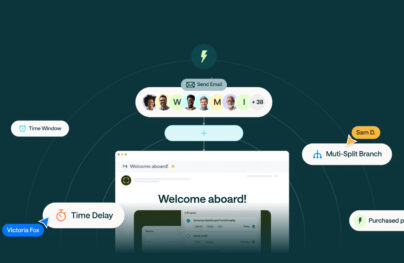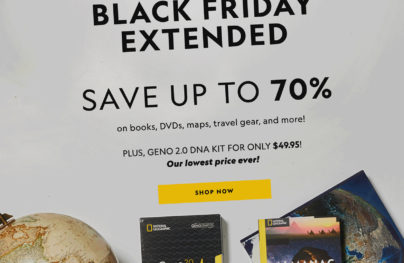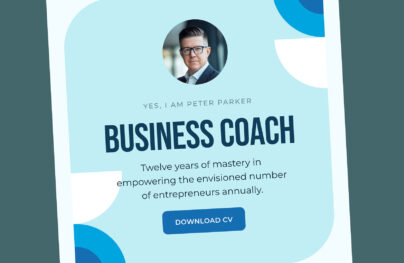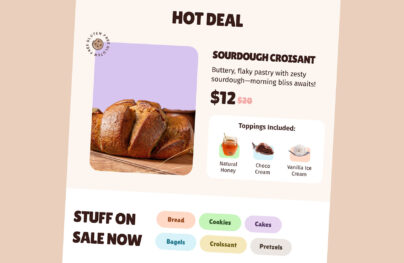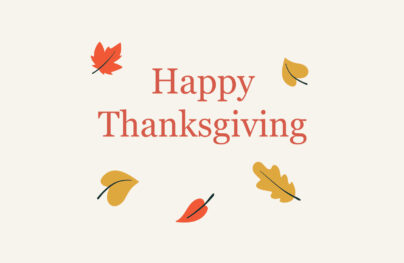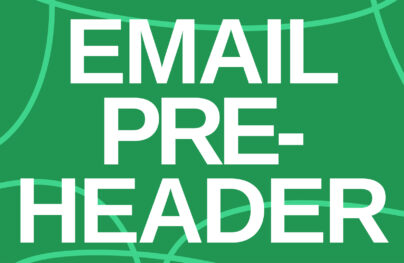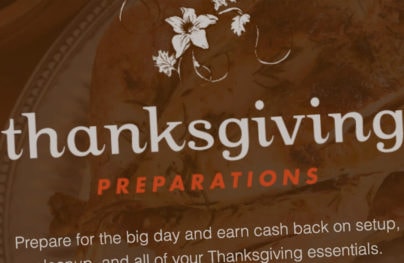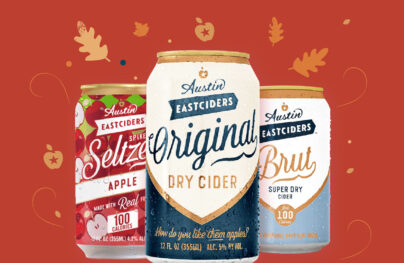The Best Time to Send an Email Newsletter: A Complete Guide and Research
Timing is crucial to success in many spheres, and email marketing is no exception. How often have you sent hyper-personalized newsletters to your fine-grained market segment and ended up with mediocre results? Being too early or too late can be devastating for email campaign performance.
Finding the best time to send an email newsletter can significantly affect how your audience engages with your content. With inboxes flooded daily, timing your emails strategically can help you stand out, increase open rates, and boost overall engagement. But when exactly is the right time? This guide will dive into research-backed insights that reveal the best days and times to send emails based on different industries, target audiences, and regions. Whether you’re looking to reach early-morning readers or afternoon browsers, understanding your audience’s behavior is key to crafting a winning email strategy.
Content, email design, and offer are no longer the only ones that compel the audience to open the email, engage, and convert. Time has become a crucial element of the equation. In our fast-moving world, where customers have busy, hectic schedules, starting a conversation at the right time is the only way to get some response.
A timely message generates strong buyer interest, capitalizes on short attention spans, creates a competitive advantage, and helps achieve desired goals faster and more efficiently. It increases engagement and reinforces the brand’s image and reputation.
What is the best time to send an email newsletter? How do you determine it for your company? Follow our guide to find answers.
Timing can be the difference between success and failure, especially in email marketing. Did you know that a regular working person with a busy professional setting receives over 100 newsletters daily? Cutting through this noise is a true challenge. The right moment is what you need to make yourself heard.
With Postcards Email Builder you can create and edit email templates online without any coding skills! Includes more than 100 components to help you create custom emails templates faster than ever before.
Free Email BuilderFree Email TemplatesHowever, being on time has more substantial benefits. Consider what perfect timing might do for you.
It Increases Open Rates
Reaching subscribers when they have free time to check their mailboxes for professional or personal needs can drastically improve the chances of your email being opened.
It Increases Clicks and Conversions
Even though an increased open rate is the earliest measurement point, it still relates to conversions and leads. The more messages are opened, the more chances your email has to drive conversions. On top of that, as you might drive engagement because you meet your customers’ expectations with timely messages, recipients are most likely to interact with your email content and click on links.
It Secures Better Engagement
The main drivers of customer engagement are clarity of expectations, satisfaction with communication, and healthy relationships with the brand. Constantly delivering your message at the right time might influence these human interactions’ crucial psychological and behavioral aspects, trigger positive emotions, and reinforce your connection with customers.
It Protects Your Investment
Reaching subscribers when they are ready and want to read more about you and your offer is the best way to ensure your investments are not in vain. It increases the chances of referrals, extending your target audience’s outreach. Even if your email fails to achieve a high conversion rate, it will still bring value to the customers, giving them food for thought and a reason to return.
It Amplifies ROI and Sales
High open rates and conversions are tightly related to ROI and sales. If you nail the first two metrics, you have better chances of getting positive ROI and high sales. Determining the best time to send an email newsletter helps to influence your sales by heightening opens and click-through rates.
It Decreases Bounce Rates
When your emails arrive on time, subscribers regularly open and engage with them, and ISPs and mailbox providers consider you a reliable partner. They will inspect messages from your company less rigorously, letting them smoothly pass their barriers and land in the inbox folder. Being favorable and respected by key email environment participants builds trust, increases the sender’s scores, and decreases bounces.
It Gives Your Company a Competitive Advantage
They say a spoon is dear when lunchtime is near. How often have you appreciated brands that reach you with the right message at the right time? Timely delivery brings positive emotions and makes us feel valued and appreciated. Such a positive reaction reinforces the connection with the brand and gives it a competitive advantage over others.
With Startup App and Slides App you can build unlimited websites using the online website editor which includes ready-made designed and coded elements, templates and themes.
Try Startup App Try Slides AppOther ProductsIt Decreases Complaints and Spam Rates
On-time correspondence brings numerous benefits crucial to converting subscribers into loyal fans. These increased levels of engagement and satisfaction make the company an all-time favorite. Customers are more likely to forgive mistakes and less likely to register complaints or put newsletters in a spam folder.
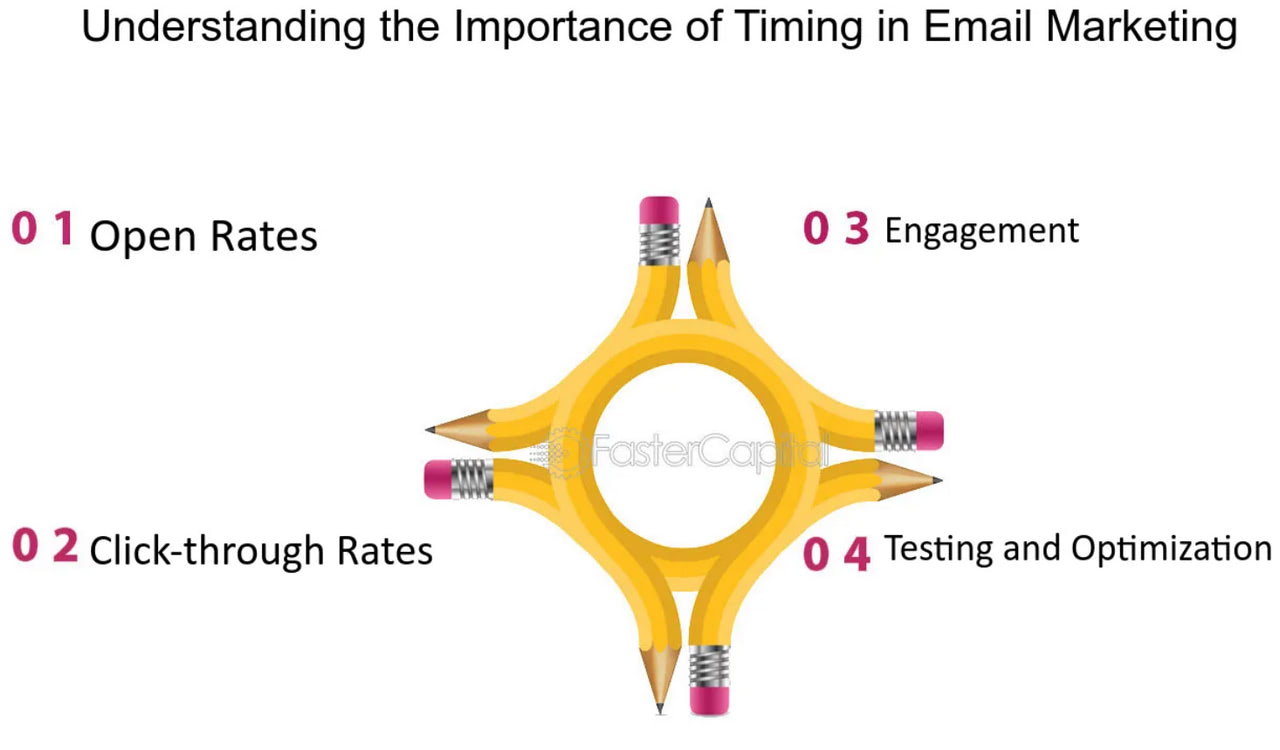
Importance of timing in email marketing (visual snippet by FasterCapital)
Unlike other quantitative metrics that are precise and clear about how well or poorly you are doing, determining whether you use the proper timing to reach your audience can be difficult. There is no exact time-proven method or tool to calculate it. Plus, it varies depending on the niche, industry, product, target audience, season, and even type of email campaign.
So, when is the best time to send email newsletters? The only thing you can do is track and monitor key email performance metrics, as perfect timing always positively influences them. But do not expect to achieve the highest results. Perfect timing will gradually improve your email campaign results. Therefore, if you notice a slight increase in the following metrics:
- Deliverability
- Open rates
- Click-through rates
- Conversions
- Engagement
and see a decrease in
- Bounces
- Spam rate
- Complaints
It might mean that you are on the right path to determining the best time to send an email newsletter.
It would also help to keep track of all your successful and failed campaigns during the year to see trends and fluctuations in this metric throughout the seasons. Make sure to break your subscription list into segments with shared preferences, behaviors, demographics, and psychographics to determine trends within specific groups more accurately.
Optimal email send times may drastically vary for businesses in various sectors, even the same one. This is because the right timing largely depends on several factors:
Type of Business
B2B and B2C industries have different peak times when their audiences are ready to interact with email. Companies that sell to other companies benefit the most from working hours and days when everyone is absorbed in professional activity. In contrast, businesses that sell directly to customers may see the highest engagement during hours and days when customers are more likely to check personal correspondence.
Type of Industry
No two industries are exactly alike when it comes to optimal send time. For instance, pharmacies, food companies, and SaaS companies have different peak times when customers are most receptive to email communication.
Type of Target Audience
Audience preferences, needs, habits, demographics, and psychographics are pivotal when deciding the best time to send an email newsletter. For instance, the younger generation (K-12 children and college students) usually check their mailboxes after school or in the evening, guided by their social habits and schedules. At the same time, working professionals prefer to go through their digital correspondence during lunch breaks or early in the morning before work.
Type of Email Campaign
Timely outreach largely depends on the intentions of an email campaign. Suppose you want to compel users to act immediately because you have limited flash sales. In that case, reaching your customers when they have time to interact with the content and appreciate the offer is better. But if you want to nurture customers by sending a “Thank You” or helpful information, you might benefit from the weekend when they receive fewer emails.
Type of Device
The medium through which recipients access their emails influences every aspect of an email marketing campaign, including timing. Studies show that working professionals will likely use desktops to check email. Take these slight differences in habits and preferences when defining the best time to send an email newsletter.
Email Frequency and Sequence
Sometimes, you need to send more than one email weekly or monthly. In that case, the best time to send the first newsletter and follow-ups will depend on the sequence and frequency of your outreach. You must strike an optimal balance and ensure your emails keep your subscribers in the funnel by reaching them at the right time with the right content.
Season and Events
Holidays and seasons may drastically change customer’s behavior, habits, and preferences. What works during the dog days of summer (the hottest and most relaxed period) might not work in December during the Christmas rush (the busiest period). It is crucial to consider seasonality and current events as they affect when recipients are most likely to open and engage with your digital correspondence.
Competition
For many email campaigns, the right timing equals high inbox placement. Reaching your subscribers when their mailboxes are not overserved requires companies to analyze the behavior of their competitors and find the best time slot to prevent email from being lost in a sea of similar offers.
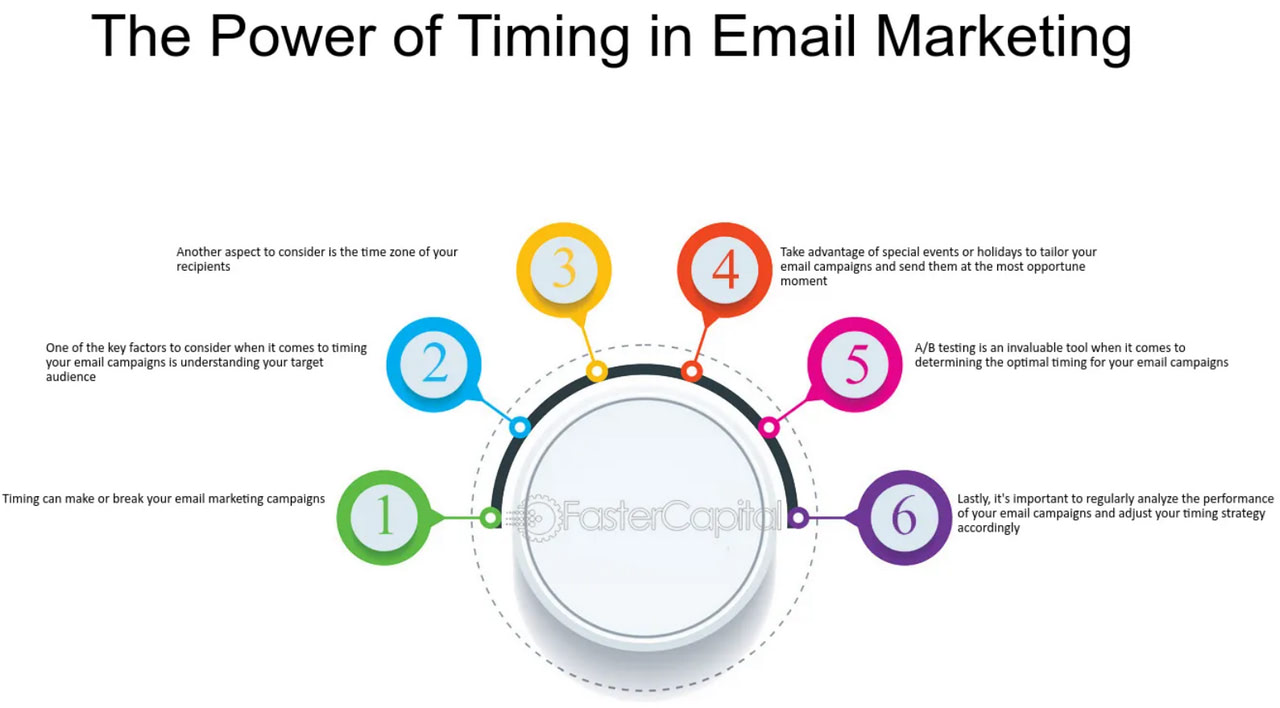
Factor influencing timing (visual snippet by FasterCapital)
Determining the best time to send an email newsletter is an ongoing process that does not happen over the night. Apart from considering all the above factors, companies should research and analyze a ton of specific data to understand when their subscribers have the time, mental space, and desire to read their newsletters.
But what if you are starting or do not have the time or resources to do your analysis? Then, you can refer to general studies and statistics by leading ESPs to get valuable real-time insights on the best send times for your niche. This could be a great starting point.
Let’s find out the best time and day to reach your subscribers, according to recent reports by Brevo and Hubspot, whose teams have analyzed tons of user data.
Note the send times featured here are based on the subscriber’s time zone.
According to recent reports, if you target working professionals, this group’s highest engagement for marketing emails occurred in the morning (8 AM to 10 AM) and during lunch breaks (12 PM to 3 PM).
This data closely describes the common routine of a regular working person who prefers to check email before the day starts to catch up on anything that might affect their routine during the day. Lunchtime indicates people’s desire to relax and check their correspondence to see if something interesting is in there for them. Therefore, sending your promo and sales newsletters in the afternoon is highly recommended when customers enjoy some “me-time.”
It is crucial to note that these baseline time slots may differ from industry to industry. Here is a short list of the best send timing for popular niches:
- E-commerce – 10 AM
- SaaS – 2 PM
- Marketing – 4 PM
- Retail – 8 AM
- Hospitality – 8 AM
- Non-profit organizations – 3 PM.
Therefore, check reports for the best time to send email newsletters in your niche.
Let’s explore some of the insights shared by ESPs in their reports to determine the best day to send an email newsletter. Much like with time, there is no single option for every niche and purpose. However, there are some common benchmarks.
According to most ESPs, emails sent on Thursday accounted for the greatest open share. Surprisingly, this benchmark works across industries with several exceptions. Tuesday also yields high engagement, staying on the lead for some industries. According to Brevo’s report, the day after Monday sees the greatest share of click-throughs surpassing Thursday.
Take a look at the trends for the best days of the week across popular niches as different industries have different audiences and email habits:
- The best days to send an email for e-commerce are Tuesday and Thursday.
- The best day to send an email for marketing services is Wednesday.
- The best day to send an email for offline retailers is Thursday.
- The best day to send an email for hospitality is Thursday.
- The best days to send an email for SaaS companies are Tuesday and Thursday.
- The best days to send an email for non-profit organizations are Tuesday and Thursday.
According to studies, Tuesday and Thursday see the highest opens; however, Wednesday has the highest click-through rates. So, when choosing the right day for reaching subscribers, remember what kind of campaign you will run. If you need to generate sales, then Wednesday should be your top choice, but if you want to deliver value through informative blasts, Tuesday and Thursday may do the trick for you.
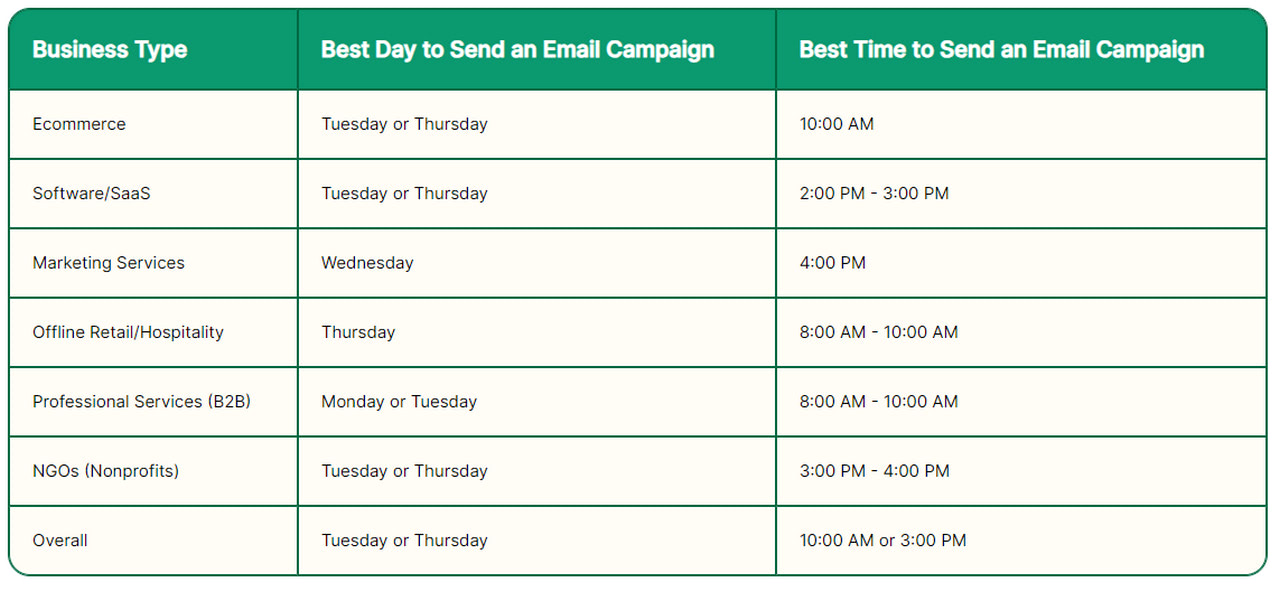
Report by Brevo
The Best Hour for Every Weekday to Send an Email
MailChimp has analyzed a million email marketing campaigns across various niches that serve U.S., Canadian, U.K., and Australian markets. They have determined the best hour for every day of the week to reach subscribers with an email. Here are their findings:
- The best times to email on Monday are 11 AM and 6 PM.
- The best times to email on Tuesday are 8 AM and 12 PM.
- The best time to email on Wednesday is 12 PM.
- The best times to email on Thursday are between 7 AM and 8 AM and 12 PM.
- The best times to email on Friday are 8 AM and between 10 AM and 12 PM.
- The best time to send an email on Saturday is 11 AM.
- The best times to email on Sunday are 11 AM and 7 PM.
Numerous reports indicate that the lowest engagement occurs at the start and end of the work week (Monday and Friday). Saturday is traditionally the worst day to reach your subscribers. However, Sunday evening opens a golden opportunity for companies to reach subscribers who might check their mailboxes to prepare for the week beforehand.
B2B companies have more unique engagement patterns than other business types. This is because they have a long sale cycle that involves various stakeholders. Plus, their newsletters usually include sales enablement or marketing material.
Even though business professionals who closely consider their customers’ needs, preferences, and expectations make the decision, email communication still has pure business intentions. That means lunch break hours or the end of the day, when people are tired of work and turn toward distractions to relax, might not work for B2B companies.
But what should work? HubSpot reports that almost 50% of B2B marketers agreed that 9 AM and 12 PM see the most engagement. As for the best day of the week, studies show that Monday and Tuesday have the highest openings for the B2B sector.
The Best Time to Send Transactional Emails
The reports featured above consider promotional and informative emails. However, what about transactional newsletters that underlie retention, nurturing, converting, and generating profit? Timing is also crucial for their success. Even though most of them are automatically triggered by a client’s activity or inactivity (like reminders to renew paid subscriptions), companies should still correctly determine when these newsletters should reach subscribers.
Here are recommendations on what are the best times to send some popular transactional emails according to the studies:
- Email confirmation should be sent immediately after a prospect has signed up for your mailing list.
- A welcome email should be sent immediately after the email address is confirmed. The second email (usually with necessary information for better onboarding or introducing product features and potential) should be sent in several days.
- Password reset emails should be sent immediately after the request.
- Abandoned cart reminders should be sent several hours after the transaction. The second reminder should be sent no earlier than the next day, preferably at the best time to secure engagement.
- Follow-up emails should be sent in 3-4 days. Refrain from sending them to your prospects on Monday and Friday.
- Cold emails should be sent at peak times. Depending on your industry, you should choose the best day and time to reach subscribers.
Reports by the leading ESPs mostly reflect the habits and preferences of working professionals and millennials. But what about college students and representatives of the Baby Boomer generation? These are two huge demographic groups that generate profit for many industries. The optimal times to reach them differ from what we have seen before.
- The best time to send an email newsletter to the young generation (including K-12 children and college students) is after school and in the evening (from 8 PM to midnight) on Monday, Tuesday, Wednesday, or Thursday.
- The best time to send an email newsletter to Baby Boomers is right after they wake up. Usually, this accounts for the 5:00 AM—7:00 AM period.
Having industry benchmarks at your fingertips is a great starting point, but this does not mean you should mindlessly follow them and try to measure up to open and click-through rates presented in other studies right from the bat.
The perfect timing for your company depends on many factors that may fluctuate throughout the year or change due to the economic climate. They can even drastically differ from what we have seen already. Determining the best time to send an email newsletter for your particular business, product, campaign, and target audience is highly recommended.
How do you do that? You have to reach into your data stores and assign timeframes to well-delineated audience segments and types of email campaigns. Let’s consider several best practices that might help.
Understand Factors that Influence Timing
Optimizing email send time starts with thoroughly understanding the factors influencing it. The type of business, industry, target audience, product, competition, season, events, frequency, sequence, email campaign, marketing goals, and even the device your subscriber uses to open emails matter.
From different age groups with varying online activity patterns to the content you want to deliver, these tiny yet crucial aspects of communication influence when subscribers are most likely to open and engage with your emails. Therefore, understand your presence and activity in the email channel. It would also help to analyze your competition and segment your subscription list into groups with shared preferences, needs, expectations, or the same demographics.
By integrating this information into your decision-making process, you can define the best time, polish it with A/B tests, and tailor your email campaigns to ensure they land in inboxes when people are ready to read and interact with them.
Analyze Historical Data
Industry standards are great starting points. However, suppose you want to determine the best time to send an email newsletter specifically for your brand, campaign, and target audience. In that case, you should consider looking at historical data around send times and correlating engagement rates. Your data will never lie. It will guide and navigate you to the best communication.
This step involves getting your historic email metric data, such as open rates, deliverability rates, click-through rates, conversions, and revenue per email, for at least several months and analyzing it against various criteria.
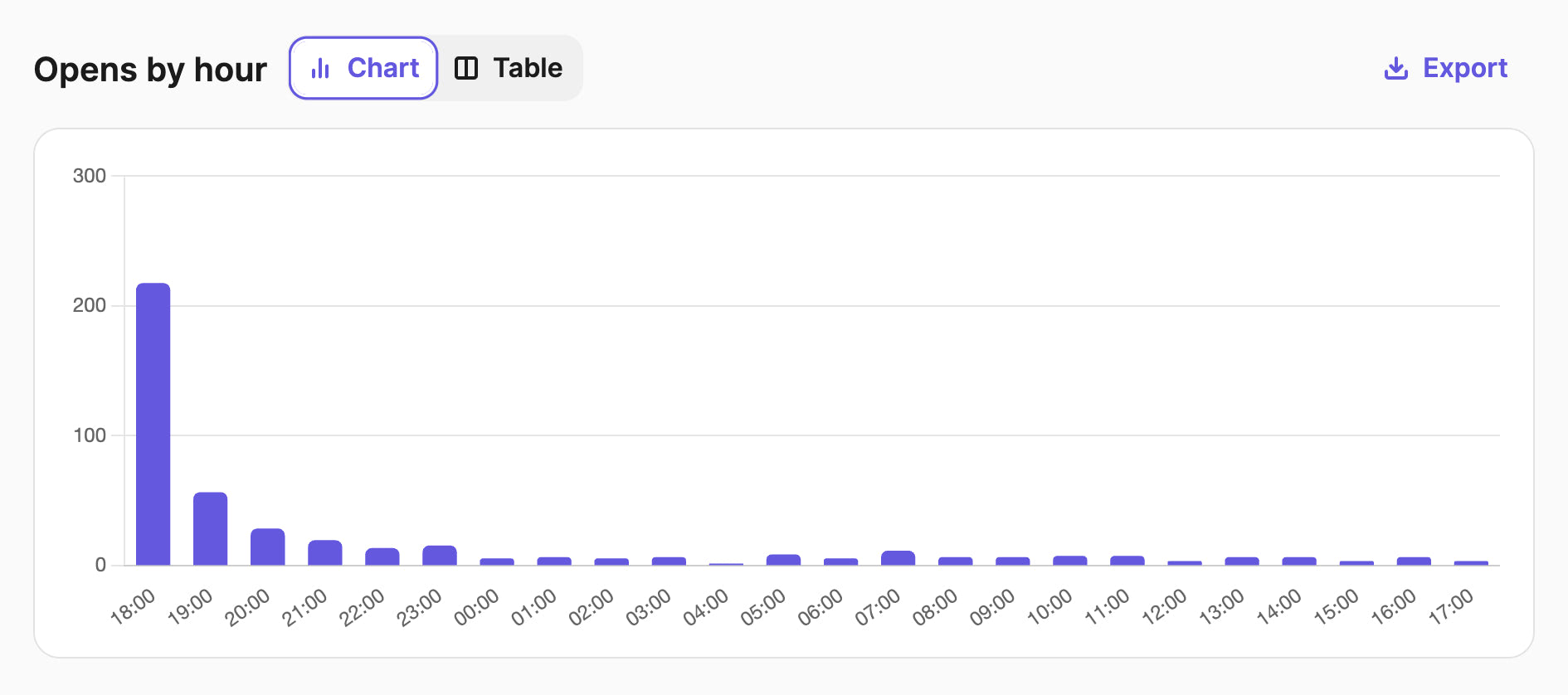
You might segment it into groups and sort each from top to worst performers. Inspect send days and times and compare them with each other. It would also help to analyze your results against criteria such as age, gender, location, habits, preferences, season, product, and type of campaign.
Measure Key Email Campaign Performance Metrics
Analyzing historical data gives you crucial knowledge from the past. However, it is crucial to correlate these results with the most recent data. Here, you need to measure your current key email campaign performance.
Unlike the previous step, you may focus on open rates and deliverability metrics as they are directly related. The logic is that if you determine the send time correctly, you should see a slight increase in open rates and deliverability. It might also positively affect click-through rate and conversion, but not necessarily.
Tracking and evaluating your open rate could be easily done through ESPs. They offer clients a range of tools to do it automatically. As for deliverability, you might also employ the ESPs toolset. Ensure you monitor and analyze key factors such as delivery rate, unsubscribe rate, spam rate, and complaints.
It is also crucial to check progress against benchmarks and previous performance to spot patterns of improvement or decline. Segment your mailing list and inspect timing according to certain criteria.
A/B Testing
Determining the best time to send email newsletters can take trial and error, as many variables come into play. One way to emerge victorious is by conducting A/B tests. These tests help you learn more about your audience and their preferences so that you can make necessary changes to reach them at the most appropriate time.
Here is how it works:
- Segment your subscription list into groups with shared needs, preferences, or habits.
- Define a control send time and a variable send time. The latter could be time of day (morning vs. evening, or morning vs. afternoon), day of send (Tuesday vs. Thursday or weekday vs. weekend), or specific time blocks.
- Conduct A/B tests for different options. Send the same email design and content but at different times. Use Postcards to create high-converting, mobile-friendly, and accessible email templates to ensure your message looks consistent for every recipient and does not bias the results.
- Analyze results. Start with inspecting open and deliverability rates, then move to click-through rates and conversions.
Depending on results, build upon what works, eliminate what does not, optimize your send times, and polish your strategy.
Create High-Converting Device-Optimized Email Campaigns
One of the most important considerations about finding the best time to send an email newsletter is the quality of the campaign, as it may drastically distort an overall picture and even give you false data. The rule of thumb is that you need to bring your subscribers value with every outreach, and only then can you start polishing your timing.
Therefore, ensure your email campaign meets the following recommendations:
- It has an eye-catching and compelling subject line.
- It has an informative email preheader.
- It is hyper-personalized and tailored to a specific market segment.
- It is thoroughly authenticated.
- It is responsive and accessible.
- It is optimized for the subscriber’s preferred device.
- It has a well-thought-out copy.
Finally, it has a high-converting email design. Directly influencing the subscriber experience, it affects email engagement, trust, sales, satisfaction, and loyalty, bringing about positive key email performance rates. Use Postcards email builder – as a professional email builder, it makes it easy to design stunning, dynamic, branded, eye-pleasing designs without coding or design skills in minutes. It will take care of responsive behavior, mobile friendliness, and optimal readability to ensure email looks and works consistently across mailbox providers.

Postcards – intuitive email newsletter builder
Build Strategy
Knowing the best time to send an email newsletter is a fundamental step in building a strong email marketing strategy. It can still be tricky, as the best time does not always mean the highest conversions or revenue. With the right send time, you should expect high inbox placement and more chances to compel potential customers to open the email and interact with the content. Therefore, build your strategy based on this knowledge.
As a rule, email marketers use peak times to send promotional emails. Some recognize the hidden potential of the least popular options. Emails with less crowded inboxes (for example, over the weekend, as people generally receive fewer emails during this period) could have a better chance of being noticed. So, you might try to reach subscribers during off-peak hours on Friday, Saturday, and Sunday to secure better inbox placement.
Conclusion
Ideally, you want subscribers to be primed and ready to receive your emails. They should have time and desire to interact, engage with the content, and follow your lead. However, finding the best time to send an email newsletter is not about determining a universally perfect time slot but defining various send windows perfectly aligned with your audience and their habits, preferences, needs, and expectations during certain seasons or email marketing campaigns.
After analyzing reports about the best time to send an email newsletter, the biggest takeaway is that there is no one-size-fits-all solution. It may drastically vary from industry to industry, even for companies inside one sector. But, this should not surprise you as this factor depends on many tiny yet vital aspects like type of business, industry, campaign, goal, and even season.
The best thing you can do is to use industry benchmarks as a solid foundation for determining the best send time for your particular brand, campaign, and target audience. Analyze your historical metric data, segment your audience, do A/B tests, and polish your options. Finally, ensure your outreach brings value to your customers through well-crafted hyper-personalized email newsletters.
